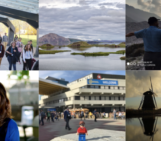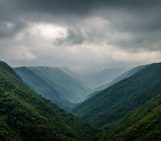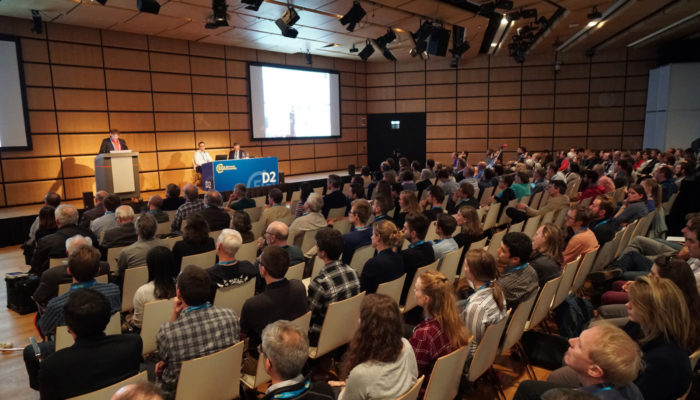
A wide variety of webinar sessions were streamed during EGU 2020’s Sharing Geoscience Online, including all of the Great Debates and Union Symposia. The sessions were very well attended, with some sessions having over 700 participants. An extremely high level of engagement meant that in many cases not all of the participants’ questions could be answered in the available time.
Union Symposium 4: Communicating a Global Climate Crisis: If our house is on fire, why haven’t we called the fire brigade…? was one of Sharing Geoscience Online’s most successful webinars, attracting a very large and engaged audience. It highlighted the challenges that exist in communicating climate change and demonstrated ways in which scientific research and evidence can be communicated in a way that is meaningful and persuasive to the public and policymakers alike.
During the session, over 100 questions and comments were posted by the participants, only a few of which were able to be answered during the webinar. Happily however, the session’s speakers have shared their responses to some of those questions that weren’t able to be answered in this blog post. Whether you missed the live session or watched but were left with some unanswered questions, this is the blog post for you! If you’d like to watch or re-watch the session you can find it here On YouTube. Simon Clark’s talk was added after the live-session, due to illness and can be watched separately here.
Leo Hickman: Director and Editor of CarbonBrief
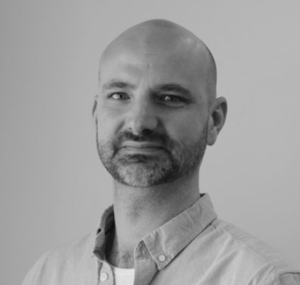
Leo Hickman
In your view, if scientists would like to communicate more, what audience should they target? Lay audience, journalists, someone else?
I’m not sure it’s that easy to control who your communications reach – let alone specifically target anyone – but I would encourage scientists to explain their work and specialisms via social media, where possible. Some climate scientists, such as Professor Ed Hawkins and Professor Richard Betts in the UK, have had great success on Twitter calmly and patiently explaining climate science to all-comers (including climate sceptics) and have won a lot of respect (and a large audience) doing so.
Should we focus on deniers and prevaricating politicians, rather than on those who are already convinced? And if so, how can we do this effectively?
No, I don’t think that’s a sensible strategy for scientists, really. Not least because it will largely be a waste of your time. I think it is far better to explain the science to those who are genuinely curious and interested and, by doing so, you might also attract the interest of those in the “middle” – the silent majority, if you like, who might not see climate change as their number one priority or concern, but who are open – if engaged in a compelling way that connects to their interests and values – to learning more from someone who is a position of trust and authority, such as a scientist.
How do you anticipate journalists will cover climate change in the coming years? Will it be difficult to keep the drumbeat for political action while leaders and nations continue to deal with a pandemic?
There has certainly been an inevitable decline in media coverage of climate change during the Covid-19 pandemic – roughly 30% in terms of volume of stories. But it’s worth remembering that the period just before the pandemic also saw record-high media interest in climate change. But the focus now among many policymakers – and, hence, journalists – is on the “green recovery” from the pandemic, so the two stories are likely to align and overlap in many ways. And we at Carbon Brief have seen extraordinary interest in our analysis showing that Covid-19 led to a sudden, short-term decline in global emissions. So I see a different drumbeat, perhaps, but not a reduction in “noise”.
I think a lot of scientists are afraid of being misquoted and risking their reputations by talking to journalists – given how media tends to focus on feeding the “state of fear”. How can we trust journalists to quote us fairly?
Great question – and one I get asked a lot by scientists. One simple thing you can do if you feel apprehensive is to move any discussion onto email rather than doing it over the phone (if they call you for a quote). You then have a record of exactly what you were asked and what you said. It also gives you more time to consider your response (and quickly Google the journalist’s name to see if they have “form” for misreporting science). It also really pays off, as I’ve stated above, to be active on social media as a scientist, especially Twitter which is the platform most used by journalists. If you spot anything in the media that’s misleading – either about a specialism you know about, or directly about your work – call it out and tag the journalist directly into your tweet or post. Explain why it is wrong. And if you feel you’ve been misquoted, then this is especially important to do. Also, the more active you are on social media, it’s been shown that this higher profile attracts the attention of journalists and you’re more likely to be approached to give a quote, etc. There are several early career climate scientists who now have a very high media profile as a result – far higher often than their more senior/experienced peers! Handled carefully, this profile can actually be a real career boost.
Jutta Thielen-del Pozo: Head of the Scientific Development Unit at the Joint Research Centre of the European Commission
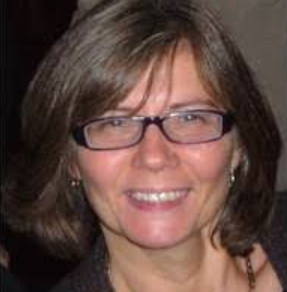
Jutta Thielen-del Pozo
What advice would you give to the scientists that walk this fine line between sharing their expertise with the world and getting blamed for any negative consequences?
Communicating science is indeed a great responsibility, particularly if the output of research is translated into policy and thus into actions that have impact not only today but also for the future. It is therefore essential that scientists continue to describe the underlying data and models and make them available in an open, transparent and reproducible way. I further believe that addressing uncertainties honestly and comprehensively, and communicating the consequences and potential impacts clearly, is essential. The more transparency we achieve, the greater the chances that more people will understand, trust the results and agree on science-based decisions. The more we can do to increase sections of society who believe in facts – the better.
The polar bear is frequently used as the symbol of the climate crisis. Do you think that there needs to be more localised symbols for the climate crisis in order to get society more active in talking to policymakers?
Indeed, I think that rooting the discussing of climate change in the heart of local communities would make a big difference for the understanding and for moving people to support actions that help limiting climate change. Using appropriate images, language and examples how a particular region can be affected is essential in this context: the impact of sea level rise will be of more interest to communities living in coastal areas than for farmers inland who may be facing water shortages.
Scientists are spending time learning how to communicate their research, but it sometimes feels one-sided. Given the severity of the climate crisis, should policymakers make more of an effort to engage with scientists.
I think there is a lot of clichéd thinking on both sides: the scientist who cannot explain and the policymaker who is not interested. It is our experience that many policymakers want to take an evidence-based approach and are trying to understand what scientists are saying. But we must not forget they face constant urgent deadlines and often don’t have the time to digest complex scientific findings. It is great that scientists are trying to become better communicators but they also need to understand the priorities of policymakers. The best way of achieving this is by talking with policymakers rather than at them. Entering into a meaningful dialogue (rather than a lecture) will allow scientists to better understand the questions and constraints while also enabling policymakers to better understand the message, uncertainties and their sources. We have seen numerous examples from the EGU where this has been demonstrated to work – but it does require both sides to go the extra mile.
Michael Mann: Professor of Atmospheric Science at Penn State and Director of the Penn State Earth System Science Center
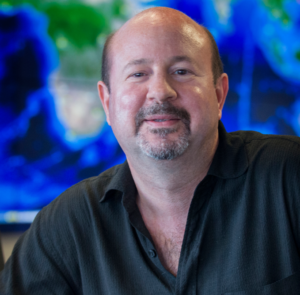
Michael Mann
Can you comment on how speaking out as a scientist and getting involved in politics might affect one’s career as a scientist (especially given the unwelcoming academic job market)?
This is a matter that is near and dear to my heart (I wrote a commentary about this very topic in the New York Times some years ago, “If You See Something, Say Something”). There was certainly a time when scientists would take a hit in terms of the respect and support by their peers for venturing into the arena of public policy and politics. It has been argued that the great scientist and science communicator extraordinaire Carl Sagan was denied entry into the National Academy by peers who felt it was beneath a scientist to enter the public sphere. Today, it seems that there is not only greater tolerance for but, indeed, support for scientists who wish to communicate the science and its policy implications to the broader public. The various scientific societies all provide support and training for scientists who are interested in engaging in public outreach, and the scientific community is now rewarding scientists who choose to do so. I was humbled, in this regard, to be elected to the National Academy this past April. It seemed a tacit statement that public outreach aimed at informing the public and engaging stakeholders and policymakers is not only not seen as a liability but, instead, is indeed viewed as an asset when it comes to one’s career as a scientist.
Simon Clark: Video producer and science communicator
How do you respond to negative or trolling statements in the comments section of your YouTube videos?

Simon Clark
One of the best pieces of advice I was ever given was “never wrestle with a pig, they’ll drag you down into the mud and win on experience” – and I think this has relevance to the comments section! You have to remember that when you respond to any comment as a creator that you are boosting the signal of that comment. Sometimes that’s exactly what you want to do, as in the case of constructive feedback or praise, fostering a positive environment in the comments. But boosting a troll or an excessively negative comment never yields anything good. The best practice is to not engage and instead to use the built-in community features to “shadowban” problematic users and block comments containing certain words – I find “propaganda”, “al gore”, and “libral” do wonders.
That’s more practical advice, but I should also address the more personal impact of these comments too. I guess over time you just develop a thick skin! You kind of have to in order to not let the b*****ds get to you. I definitely found the comments more difficult to deal with in the beginning, and found great catharsis in sharing the worst ones on social media. But over time I’ve learned to just stop looking. In the first few days of a video being released you will get useful, constructive comments but after that it’s mostly just unpleasant noise. My mental health definitely improved when I stopped checking my comments section so regularly!
How can scientists effectively share their research on YouTube? i.e. How should they change their communication style compared with in-person presentations?
I think the most important thing is to have knowledge of the format, and how people consume content on YouTube. So in order to make YouTube videos, you have to watch YouTube videos! There are some fantastic and very popular science communication channels such as Kurzgesagt, Smarter Every Day, Veritasium, Mark Rober, and Real Engineering who make video essay style content. These are just the mainstream however, and there are many genres of videos that are perfect for science communication. Some of the most popular science videos are those which take a genre conventionally used for banal entertainment and instead using it to communicate science – for example I make a series of scientists reacting to planets from sci fi worlds that is directly inspired by the “VFX artists react” series on Corridor Crew and various videos on WIRED which feature experts reacting to movie clips. The more you watch, the better you will get at making appropriate content! Communicating via video is extremely different to lecturing, so don’t just record a typical presentation. Learn the format and adapt to it.
We hope that you found these answers compelling! Thanks once again to the speakers and the conveners, as well as all the participants of US4: Communicating A Global Climate Crisis who asked such interesting questions! If you’d like to watch or re-watch the session you can find it here on YouTube, with Simon Clark’s additional section here.



